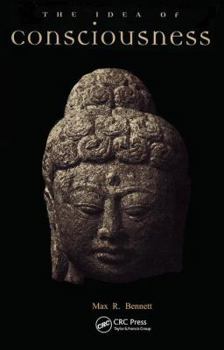Idea of Consciousness: Synapses and the Mind
Select Format
Select Condition 
Book Overview
The Idea of Consciousness examines the problem of how the working of synaptic connections might give rise to consciousness, and describes the current neuroscientific concepts and techniques used to identify and explore those parts of the brain that may be involved. This book will serve as an invaluable and stimulating introduction to the subject. Beautifully illustrated, it is a must for anyone who is curious about consciousness.
Format:Paperback
Language:English
ISBN:9057022036
ISBN13:9789057022036
Release Date:September 1997
Publisher:CRC Press
Length:192 Pages
Weight:0.85 lbs.
Dimensions:0.4" x 6.0" x 9.1"
Customer Reviews
1 rating
Lot of pictures, few information
Published by Thriftbooks.com User , 22 years ago
This book is rather textbooklike, has a lot of pictures, but on content, falls a little short of what the subject demands. Bennett sticks with discussing theories proposed by others as well as evidence and how they might fit in explaining consciousness. This is all fine, now that one needs synthesis more than new evidence and models, but Bennett could have been more speculative. I mention this, because nowhere in the book does one see how synapses or neural circuits could give rise to consicousness. I enjoyed the chapter on quantum physics and their shot at the consciousness problem. Bennett was clear, explained collapse and no-collapse interpretations, and clearly showed how and how-not these could play a role in brain functioning. He mantained healthy skepticism on the matter, but aknowledged that there is a possibility that the quantum might have something to do with consciousness. He himself believes, however, as do I, that neural dynamics are enough.Among other things, Bennett analyzes the relevance of 40hz ocillations in brain functioning, and discusses its implications and possible evidence nicely. He talks about how the syntax in the brain is contained in algorithms to process signals, in vision maybe, and how semantics is rooted on perceptual mechanisms, as well as temporal lobe specialied areas (face recognition, for example). He is quiet about qualia, but aknowledges that it is hard to not see evidence for its neural substrates on experiments done on v5, the motion area of the visual cortex, in illusions such as the waterfall effect. These show that movement qualia and activity in v5, or monkey mt, are almost perfectly correlated. He rightly stresses that is not near enough to satisfy for an explanation.Bennett discussion of the evolution of consciousness I thought was brilliant. He put the evidence in the table, (40 htz ocillations, blindsight studies, etc,) and proposed a possible way to test consicousness in animals, by say, noting the existence of neural projections through the colliculus to the visual areas, and the presence of the ocillations. He is reserved as to an opinion but seems to allow consicousness to creatures other than man. Bennett also discussed at lenght Humphreys theory of the sentient loop as source of consicousness, and also had a chapter devoted to schizophrenia, neuromotransmitters, and how this sheds light on brain mechanisms for consciousness.This book is a great introduction to the neuroscience of consicousness, is easy to read and follow, but is not original nor speculative. At the end it is hard to see how everything comes together to explain consciousness, but I doubt this was the authors intention anyway. I would recomend reading this before any other deeper books on the subject, like Damasios or Edelmans, or the collections Neural Correlates of Consicousness by Metzinger and The Cognitive Neuroscience of Consicousness, by Dehaene.






